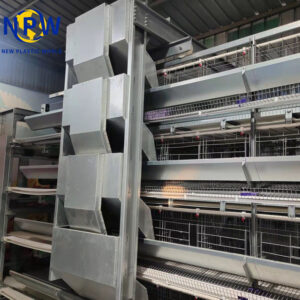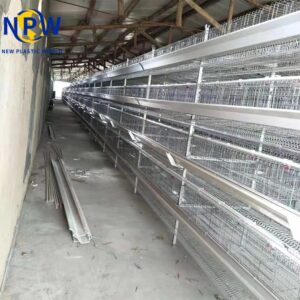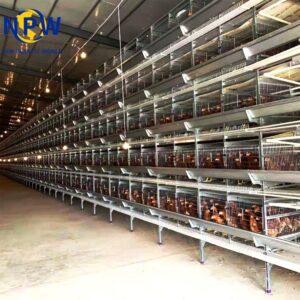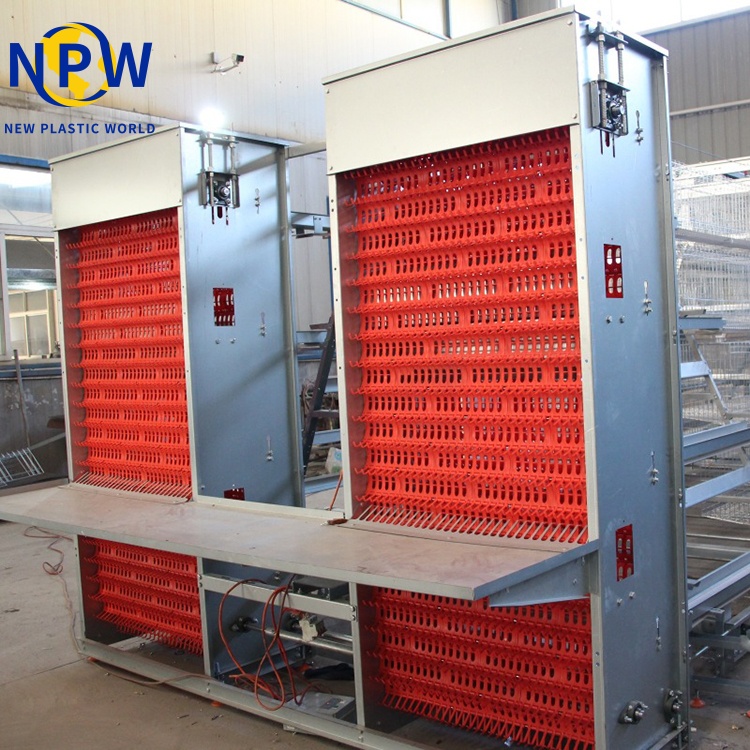
In the layer breeding industry, the choice of chicken cages directly affects breeding efficiency and the health of layers. As a popular breeding equipment in recent years, H-type chicken cages have gradually become the first choice for large-scale farms due to their unique structural design and significant breeding advantages. This article will deeply analyze H-type chicken cages, discuss the possible problems and solutions in the installation and breeding process, and provide practical references for layer breeders.
Unique Advantages of H-Type Chicken Cages
H-type chicken cages adopt a layered stacking structure design, which makes full use of vertical space. They can accommodate more layers in a limited site, greatly improving space utilization, and are especially suitable for large-scale farms with tight land resources.
The design of this kind of chicken cage conforms to the growth habits of layers. Each layer of chicken cages is equipped with independent feeding, drinking and manure cleaning systems, which can effectively reduce mutual interference and disease transmission among layers. At the same time, good ventilation and lighting conditions help layers maintain a good physiological state, improving the egg production rate and egg quality.
In addition, H-type chicken cages are easy to realize automatic management, and can be matched with equipment such as automatic feeders and automatic manure cleaners, reducing labor intensity and improving breeding efficiency.
Key Points and Common Problems in the Installation of H-Type Chicken Cages
Installation Points
Before installing H-type chicken cages, the site needs to be leveled and hardened to ensure that the ground is solid and flat, so as to prevent the chicken cages from tilting or shaking after installation. At the same time, according to the size and quantity of chicken cages, the site layout should be reasonably planned, and sufficient operating space and passages should be reserved.

During installation, strictly follow the installation drawings provided by the manufacturer to ensure that all parts of the chicken cage are connected firmly and accurately. First, fix the columns and beams of the chicken cage to ensure their verticality and levelness, then install the side nets, front nets, rear nets and other components in sequence. Pay attention to the close connection between the mesh sheets to avoid gaps, which can prevent layers from escaping or being injured.
The height and spacing of the chicken cages should be set reasonably. Generally speaking, the height of each layer of chicken cages should be suitable for layers to stand and move freely. The layer spacing should ensure good ventilation and lighting, and at the same time, it is convenient for workers to operate.
Common Installation Problems and Solutions
- Problem: The chicken cage tilts or shakes after installation.
Solution: Check whether the ground is flat. If the ground is not flat, it needs to be re-leveled and hardened; check whether the fixing of columns and beams is firm, and if there is any looseness, tighten the fixing bolts in time.
- Problem: There are gaps between the mesh sheets.
Solution: Readjust the position of the mesh sheets to ensure that they are closely connected. For larger gaps, additional mesh sheets can be added or bound and fixed with iron wires.
Common Problems and Solutions in the Layer Breeding Process
Low Egg Production Rate
- Causes: Unbalanced feed nutrition, insufficient light, inappropriate ambient temperature, too old layers, etc.
Solutions: Reasonably mix feed to ensure that it contains sufficient nutrients such as protein, vitamins and minerals; reasonably control the light time and intensity according to the growth stage and egg production of layers. Generally, the light time for laying hens should be 16-17 hours a day; keep the temperature in the chicken house appropriate, pay attention to cooling in summer and keeping warm in winter. The most suitable temperature for layers to lay eggs is 18-25℃; timely eliminate old layers with low egg production rate and update the flock.
Poor Egg Quality
- Causes: Harmful substances in feed, diseases in layers, unclean chicken cages, etc.
Solutions: Choose high-quality feed and avoid using feed containing harmful substances such as mycotoxins and heavy metals; strengthen the epidemic prevention work of the flock, regularly vaccinate and deworm the flock, and isolate and treat sick chickens in time when found; clean the chicken cages regularly to keep them clean and hygienic, and avoid contamination during the egg-laying process of layers.
Disease Transmission
- Causes: Poor ventilation in the chicken house, untimely manure cleaning, excessive breeding density, etc.
Solutions: Strengthen ventilation in the chicken house to keep the air fresh; clean the manure in the chicken cages in time and regularly disinfect the chicken house; reasonably control the breeding density to avoid overcrowding of layers and reduce the chance of disease transmission.
Summary

As an efficient and practical layer breeding equipment, H-type chicken cages have significant advantages in large-scale breeding. During the installation process, strictly follow the installation points to operate, solve problems in time, and ensure the stability and safety of the chicken cages. In the process of layer breeding, pay close attention to the growth and egg production of layers, take effective solutions to common problems, improve the egg production rate and egg quality of layers, so as to obtain better breeding benefits. It is hoped that this article can provide useful references for the majority of layer breeders and contribute to the development of the layer breeding industry.

